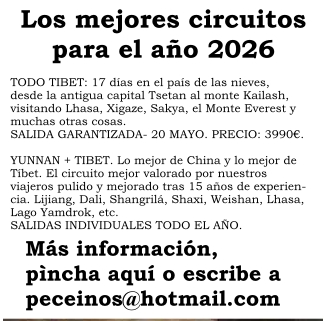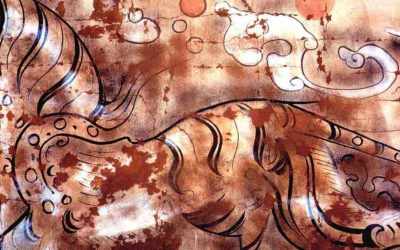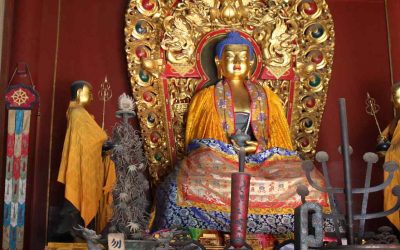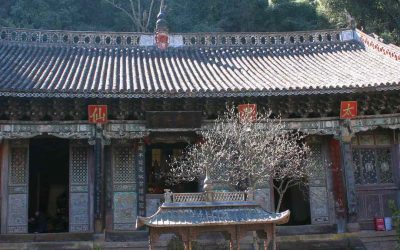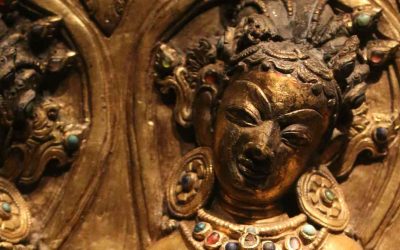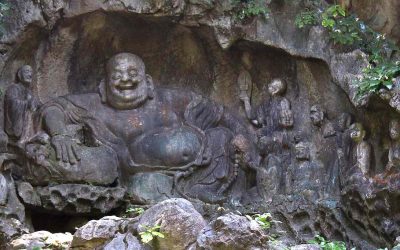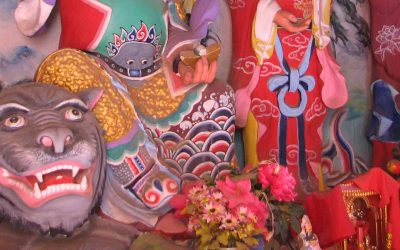Peter Harvey. Buddhism: Teachings, History and Practices. Cambridge University Press. 2013.
(Excerpts from the book. Page 11 and ff.)
In its origin, Buddhism was a Samana-movement. Samanas were wandering ‘renunciant’ thinkers who were somewhat akin to the early Greek philosophers and mystics. The Samanas rejected the Vedic tradition and wandered free of family ties, living by alms, in order to think, debate and investigate. The main Samana groups of Buddha’s time were:
JAINS
Jainism was founded, or at least led in the Buddha’s day, by Vardhamāna the Mahāvīra, or ‘Great Hero’. It teaches that all things, even stones, are alive, each containing a Jīva, or ‘Life-principle’. These are seen as individually distinct, rather like the Western idea of a ‘soul’ but unlike the universal Ātman of the Upanisads, and to be naturally bright, omniscient and blissful. The aim of Jainism is to liberate one’s Jīva from the round of rebirths by freeing it from being weighed down by an encrustation of karma, seen as a kind of subtle matter. The methods of doing so are primarily austerities such as fasting, going unwashed and pulling out the hair, so as to wear out the results of previous karma, and self-restraint, total non-violence to any form of life, and vegetarianism, so as to avoid the generation of new karma. The free-will of the Jīva is emphasized, though even actions such as unintentionally killing an insect are held to generate karma.
AJIVIKAS
Their founder was Makkhali Gosāla (Skt Maskarin Gośāla). Gosāla’s key doctrine was that niyati, or impersonal ‘destiny’, governed all, such that humans had no ability to affect their future lives by their karma: actions were not freely done, but were determined by niyati. Gosāla thus believed in rebirth, but not in the principle of karma as that which regulates the level of a person’s rebirth. The ‘Life-principles’ of living beings are driven by niyati alone through a fixed progression of types of rebirths, from a low form of animal to an advanced human who becomes an Ājīvika ascetic. The Ājīvikas practised rigorous asceticism such as fasting, nakedness and perhaps also disfiguring initiations, and aimed to die by self-starvation (as Vardhamāna in fact did), as a fitting way to end their last rebirth.
MATERIALISTS
The Materialists’ aim was to lead an abstemious, balanced life which enjoyed simple pleasures and the satisfaction of human relationships. They denied any kind of self other than one which could be directly perceived, and held that this was annihilated at death. They therefore denied the idea of rebirth, and also those of karma and niyati. Each act was seen as a spontaneous event without karmic effects, and spiritual progression was not seen as possible.
SKEPTICS
The Skeptics responded to the welter of conflicting theories on religious and philosophical issues, and the consequent arguments, by avoiding commitment to any point of view, so as to preserve peace of mind. They held that knowledge on such matters was impossible, and would not even commit themselves to saying that other people’s views were wrong. The Buddha saw this evasive stance as ‘eelwriggling’, though he shared the wish to step aside from the ‘jungle’ of conflicting views, and avoid dogmatic assertions built on flimsy grounds.
More posts on Chinese culture
Pinturas de hace 2.000 años en una tumba china
Pinturas de hace 2.000 años en una tumba china Hace ya más de 10 años que se publicó la Colección completa de los Murales desenterrados en China (The complete collection of murals unearthed in China), una docena larga de libros que describen con abundantes...
Monjes budistas en la China Medieval
Monjes budistas en la China Medieval Ese es el tema del libro de John Kieschnick. El libro analiza el contenido de las tres colecciones de biografías de monjes que se hicieron famosas en la China medieval, a través de ellas intenta darnos primero una caracterización...
Manual de Arquitectura taoísta
Manual de Arquitectura taoísta Hay algunos libros ilustrados qué producen en el lector un sentimiento contradictorio, pues a las imágenes que explican lo que el texto trata, hay veces que acompaña una exposición de las ideas demasiado superficial. Por lo tanto el...
Cómo la presencia de diosas allana el camino al poder femenino
Cómo la presencia de diosas allana el camino al poder femenino Una de las tesis de mi libro Matriarcado en China: madres, diosas, reinas y chamanes (Madrid, 2011) fue afirmar que la presencia de diosas con papel prominente en una cultura podía señalar la existencia...
Las aventuras del monje loco Ji Gong
Las aventuras del monje loco Ji Gong Los días pasados he estado leyenda una novela sobre el monje pícaro más famoso de China. Sobre el Monje Ji Gong, más conocido por su afición al vino y a la carne que por sus méritos religiosos. Su bondad y su deseo continuo de...
12 frases hechas relacionadas con el tigre
12 frases hechas relacionadas con el tigre Ante la llegada del Año del Tigre 2022 aquí van 12 frases hechas (chengyu) relacionadas con el tigre, para que los que están familiarizándose con el idioma puedan ir practicando una cada mes. Como un lobo, como un tigre 如狼似虎...
More posts on China ethnic groups
Pinturas de hace 2.000 años en una tumba china
Pinturas de hace 2.000 años en una tumba china Hace ya más de 10 años que se publicó la Colección completa de los Murales desenterrados en China (The complete collection of murals unearthed in China), una docena larga de libros que describen con abundantes...
Monjes budistas en la China Medieval
Monjes budistas en la China Medieval Ese es el tema del libro de John Kieschnick. El libro analiza el contenido de las tres colecciones de biografías de monjes que se hicieron famosas en la China medieval, a través de ellas intenta darnos primero una caracterización...
Manual de Arquitectura taoísta
Manual de Arquitectura taoísta Hay algunos libros ilustrados qué producen en el lector un sentimiento contradictorio, pues a las imágenes que explican lo que el texto trata, hay veces que acompaña una exposición de las ideas demasiado superficial. Por lo tanto el...
Cómo la presencia de diosas allana el camino al poder femenino
Cómo la presencia de diosas allana el camino al poder femenino Una de las tesis de mi libro Matriarcado en China: madres, diosas, reinas y chamanes (Madrid, 2011) fue afirmar que la presencia de diosas con papel prominente en una cultura podía señalar la existencia...
Las aventuras del monje loco Ji Gong
Las aventuras del monje loco Ji Gong Los días pasados he estado leyenda una novela sobre el monje pícaro más famoso de China. Sobre el Monje Ji Gong, más conocido por su afición al vino y a la carne que por sus méritos religiosos. Su bondad y su deseo continuo de...
12 frases hechas relacionadas con el tigre
12 frases hechas relacionadas con el tigre Ante la llegada del Año del Tigre 2022 aquí van 12 frases hechas (chengyu) relacionadas con el tigre, para que los que están familiarizándose con el idioma puedan ir practicando una cada mes. Como un lobo, como un tigre 如狼似虎...

